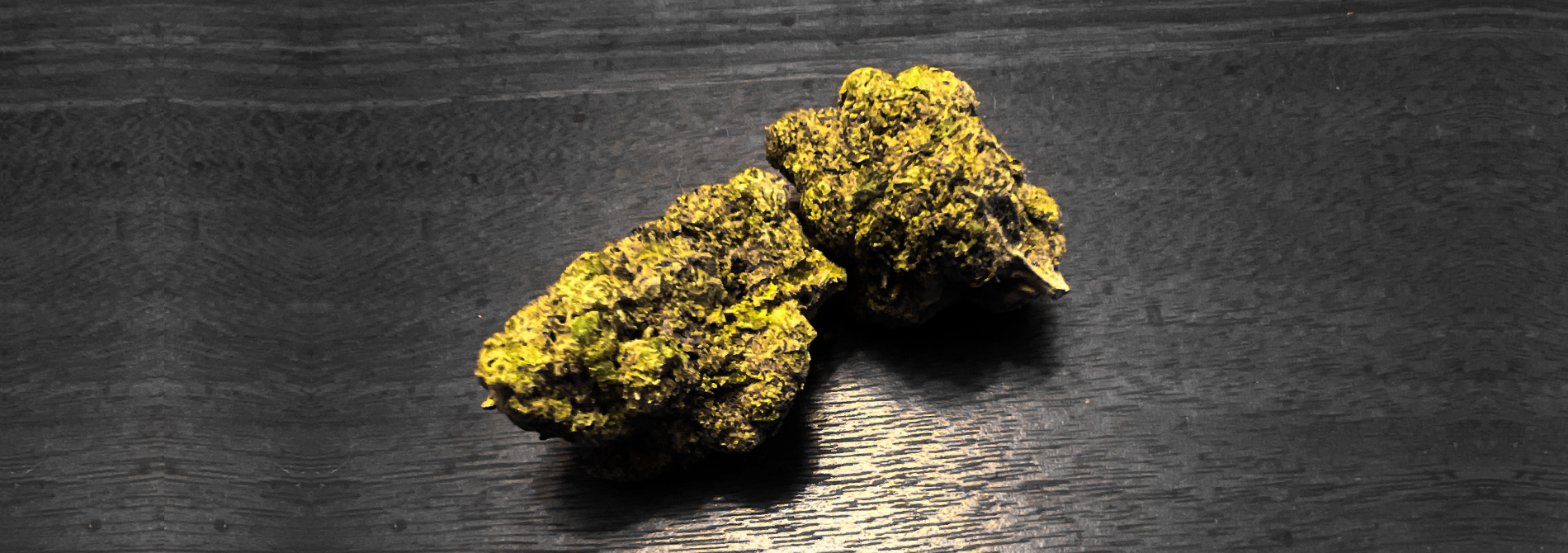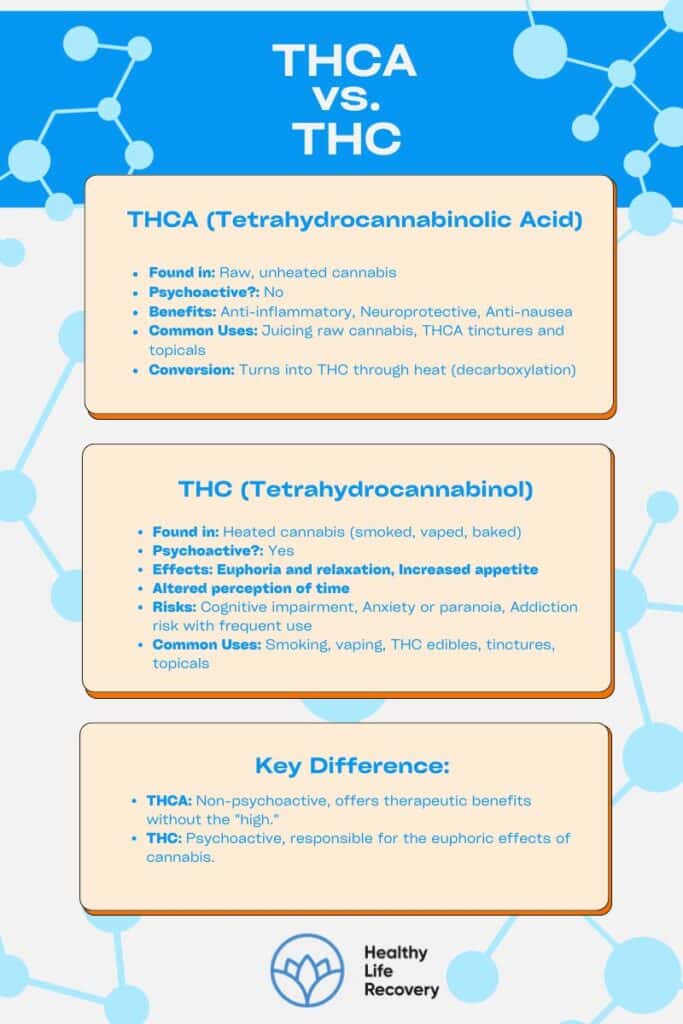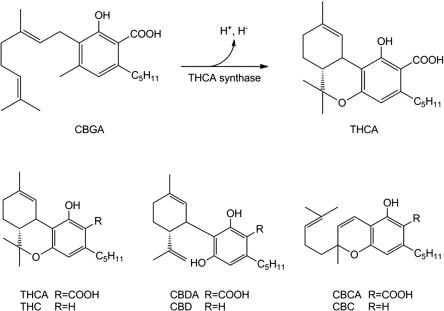There’s a new acronym quietly cropping up in conversations about cannabis: THCa. It looks familiar, sounds technical, and can feel intimidating too anyone who’s still learning the basics. Yet tucked behind those letters is a simple story about chemistry, change, and why the plant’s effects depend on more than a single molecule. Whether you’ve seen THCa on a product label, heard it mentioned in a dispensary, or are just curious about how it differs from better-known cannabinoids, this guide is built to welcome you in.
In the pages that follow, we’ll lift the veil on THCa-what it is, how it behaves inside and outside the plant, and why it’s increasingly relevant to consumers, researchers, and regulators alike. You’ll encounter plain-language explanations of the science (no phd required), a look at possible uses and effects, and an overview of the legal and safety considerations that newcomers should know.
Think of this as a calm, clear map for a new territory: not a declaration of benefits or instructions for use, but a guided introduction to the basics. By the end, you’ll be better equipped to read labels, ask informed questions, and decide what, if anything, you want to explore next.
Meeting THCa: The molecule explained and why it matters for beginners
Think of THCa as the quiet original sketch behind a famous painting – the raw chemical form that exists in fresh cannabis plants. Chemically it’s the acidic precursor to the better-known THC; in plain terms, THCa has an extra carboxyl group that keeps it from producing the familiar psychoactive effects until that group is removed. that removal process, called decarboxylation, happens with heat, light, or age, so the same plant can feel very different on your plate versus in a pipe.
For beginners, the real value of recognizing THCa is practical: it explains why raw buds, tinctures made without heat, or lab reports listing THCa aren’t the same thing as products labeled for ”THC” potency. A few speedy takeaways:
- Read labels – THCa and THC are listed separately on many certificates of analysis.
- Mind preparation - juicing or eating raw flower won’t “activate” THCa the way smoking or baking does.
- Store thoughtfully – heat and light over time can transform thca into active THC.
Below is a simple snapshot to help you visualize how THCa sits in the family of cannabinoids. The table uses common WordPress styling for clarity and quick comparison.
| Form | Psychoactive? | Common context |
|---|---|---|
| THCa (raw) | No (before activation) | Fresh flower, raw extracts, lab reports |
| Delta‑9 THC (active) | Yes | Smoked, vaped, decarboxylated edibles |
Knowing THCa gives beginners a clearer lens to interpret product descriptions, lab COAs, and the effects they might expect depending on how cannabis is prepared. It’s a small molecular detail with outsized impact on experience, regulation, and how you choose to use or store plant material – a neat reminder that chemistry often underpins what feels like simple choices.

THCa versus THC and CBD: How chemistry shapes effects and potency
THCa exists in the plant as a sleepy chemical cousin to THC – it carries an extra carboxyl group that prevents the classic “high.” Apply heat or time and that group leaves, converting THCa into THC, the molecule that binds strongly to CB1 receptors in the brain. CBD, by contrast, has a different three-dimensional shape and receptor profile: it rarely causes intoxication and frequently enough tempers THC’s effects through indirect pathways. Chemistry hear is literal housekeeping - a small functional group flip changes both experience and potency.
How that chemistry translates into effects comes down to interaction and availability.THC is a CB1 agonist and typically delivers psychoactivity and stronger acute potency when present in high amounts or when inhaled/ingested after decarboxylation. THCa shows minimal CB1 activity in it’s native form but may have anti‑inflammatory or anti‑nausea properties in research settings. CBD acts more like a molecular diplomat, modulating multiple targets (including enzymes and non‑cannabinoid receptors) and frequently enough producing calming or therapeutic outcomes without intoxication.
- Heat equals potency: smoking/vaping or baking converts THCa → THC and increases psychoactive potency.
- Raw vs activated: raw cannabis preserves THCa (non‑intoxicating); decarboxylation creates the THC profile users typically expect.
- Product labels matter: potency on a package reflects the decarboxylated content (THC) unless it specifically lists THCa separately.
Quick comparison at a glance:
| Compound | Psychoactive? | Common notes |
|---|---|---|
| THCa | No (raw) | Precursor; converted by heat |
| THC | Yes | Activates CB1; potent when heated |
| CBD | No | Modulatory; therapeutic without high |

How to use THCa safely with clear recommendations on methods and starting approaches
Respect the chemistry: THCa is the raw, non-intoxicating form of THC and it changes when exposed to heat. That means your choice of method determines whether you experience subtle, non-psychoactive effects or the full psychoactive experience associated with THC.For safe, beginner-amiable use, adopt a “low and slow” mindset: start with the smallest amount that seems reasonable for the product, wait to see how you feel, then gradually adjust. Keep a simple log of dose, method, and effects for the first few attempts so you can make informed changes.
Some routes help preserve THCa’s original profile and tend to be gentler for newcomers. Consider:
- Raw consumption – adding small amounts of freshly cured flower to smoothies or juicing hemp leaves preserves THCa and avoids intoxication.
- Cold-infused tinctures – made without heat, these can be taken sublingually for steady, controlled absorption.
- Topicals – balms and creams provide localized benefits without systemic intoxication.
Each of these keeps decarboxylation to a minimum, making them good first steps for people who want therapeutic benefits without the high.
If you opt for heat-based methods (smoking, vaping, baking), be aware that heating converts THCa into THC and increases potency.For those choosing this path: use the lowest effective temperature, begin with a fraction of what other products suggest, and allow plenty of time for effects to appear – especially with edibles, which can take 1-3 hours to peak. Avoid mixing with alcohol or sedating medications, and do not drive or operate heavy machinery until you know how a heated THCa product affects you.
Everyday safety checkpoints: buy third-party lab-tested products, store cannabinoids away from children and pets, disclose use to your healthcare provider, and avoid use during pregnancy or breastfeeding. If you experience unexpected strong effects, stay calm, hydrate, rest in a safe place, and seek medical help if symptoms are severe or persistent.
| Method | THCa preserved? | Beginner starting approach |
|---|---|---|
| Raw/juicing | Yes | Small leaf blend, once; note effects |
| Cold tincture | Mostly | 1 dropper or less; wait 30-60 min |
| Topical | Yes (local) | Patch test on small area |
| Vape/Smoke | No (converts) | One small inhalation; wait 15-30 min |
| Edible (baked) | No (converts) | Tiny portion (¼ typical serving); wait 2-3 hrs |
What to look for when buying THCa products lab results labels and reputable sources
Think of a Certificate of Analysis (COA) as the product’s report card – it tells you what’s actually inside the bottle or jar. Look for a clear breakdown of cannabinoids (especially THCa percentage and Delta‑9 THC), a terpene profile, and total cannabinoid potency stated both as raw THCa and as converted/activated total THC when relevant. A trustworthy COA will list limits of detection, the testing method used, and be tied to a specific batch number or lot so you know the results match the exact product you’re buying.
Contaminant testing is equally important. Good lab results will screen for pesticides, heavy metals, residual solvents, and microbial contaminants, and they’ll show whether each is below safety thresholds. Check the COA date and the laboratory’s accreditation – labs with ISO/IEC 17025 certification are preferable. many reputable brands provide a QR code or a direct link to an up-to-date COA for every batch; if you don’t see one,ask for it before purchasing.
- COA link or QR code: Verifies third‑party testing for that batch.
- Batch number: Ensures the lab report matches the product in hand.
- Expiration or harvest date: Indicates freshness and potency stability.
- Red flag – vague labels: terms like “lab tested” without a visible report.
- Red flag – unrealistic potency claims: Extremely high numbers that feel too good to be true.
| label item | Why it matters |
|---|---|
| COA / Lab name | Confirms third‑party verification of cannabinoids and contaminants. |
| Batch number & QR | Ties the report to the exact product; allows quick verification. |
| Dosage & serving size | Helps you dose safely – especially for edibles and tinctures. |
When in doubt, buy from licensed dispensaries or brands that publish full lab data and answer questions openly. Keep COAs for your records, compare multiple batches if you plan to buy regularly, and favor products with clear labeling and obvious sourcing. A product’s packaging and lab clarity often say more about a brand’s reliability than glossy marketing copy ever will.
Dosing interactions and safety precautions for first time and occasional users
Think of THCa dosing like learning a new language: start with a whisper, not a shout. For first-time or occasional users the rule is simple – start low, go slow. If you’re inhaling (vape/smoking), take one small inhalation and wait 10-20 minutes to gauge effects. For tinctures or raw THCa products, begin with the lowest measurable amount on the dropper; for edibles, consider a microdose in the 1-2.5 mg active-equivalent range and wait at least 2 hours before considering more. Remember that heat converts THCa into THC, which changes potency and effect, so how you consume matters as much as how much.
Interactions can be subtle but important. THCa (and converted THC) can amplify the sedative effects of alcohol, benzodiazepines, and some sleep aids – avoid mixing. It may also affect how certain prescriptions are metabolized; cannabinoids can interact with liver enzymes (CYP450) and thus alter levels of blood thinners, antidepressants, anticonvulsants and other drugs. If you take prescription medication or have chronic health issues,check with a healthcare professional before trying THCa.
Practical safety steps reduce risk: store all cannabis products locked and clearly labeled, keep dosing tools (droppers, grinders) dedicated and clean, and never drive or operate heavy machinery after use. Give yourself a calm, familiar environment for your first experiences and ideally a sober friend to monitor you.If you or someone feels overwhelmed, stay calm, hydrate, sit or lie down, breathe slowly – CBD in moderate amounts may help counter strong psychoactive effects, and black peppercorns are a folk remedy some people find grounding.seek medical help if there are signs of severe distress or cardiovascular symptoms.
Small habits make a big difference: write down your product, dose and time so you can learn what works; respect labeled potency and lab results; and if a product requires heating to be active, factor that into your dose. For quick reference, here’s a simple starter guide:
- Wait times matter: inhaled = minutes; tincture/sublingual = 15-45 minutes; edible = 60-180 minutes.
- Never re-dose too quickly: allow full onset period before adding more.
- If on meds or pregnant: avoid use until cleared by a clinician.
| Method | Suggested Start | Wait Time |
|---|---|---|
| Inhalation (vape/smoke) | 1 small inhale | 10-30 min |
| Tincture / Sublingual | 1 dropper fraction (low) | 15-45 min |
| edible / Capsule | 1-2.5 mg equivalent | 60-180 min |
Storage legal considerations and practical tips to get the most from THCa
before you tuck your stash away, remember that legal lines are porous and change quickly. In many places THCa itself isn’t the same legal animal as Δ9‑THC, but heat converts it into the psychoactive compound – a technicality that regulators pay attention to. Know local possession limits, age restrictions and whether testing or labeling is required. Never transport across state or national borders without checking the law; what’s legal at home can become illegal the moment you cross a line.Keep receipts, lab certificates and purchase records handy if you need to demonstrate intent or provenance.
Good storage is both science and habit. Aim for three simple rules: cool,dark,airtight. Useful tactics include:
- Temperature: 4-15°C (40-60°F) is ideal for flower and many extracts.
- Humidity: 55-62% RH for flower-use small humidity packs to prevent dryness or mold.
- Light & oxygen: Avoid UV and air exposure; amber glass jars or sealed stainless containers are your friends.
Some long‑term options work, but each has trade‑offs: freezing can preserve cannabinoids for years but risks trichome damage for delicate flower; vacuum sealing extends shelf life but can flatten buds. For concentrates or tinctures, inert containers (glass or food‑grade silicone for sticky extracts) and cool dark storage minimize potency loss. Always label jars with product, date received and test data if available-this simple habit helps you rotate stock and track potency changes.
| Container | Best for | Quick tip |
|---|---|---|
| Amber glass jar | Flower, tinctures | Use a humidity pack; don’t overpack |
| Silicone jar | Sticky concentrates | Non‑stick, keep cool |
| Vacuum bag | Long‑term bulk | Avoid crushing; label clearly |
To Conclude
As you close this primer on THCa, think of it as the first step on a path rather than a final destination. You’ve peeled back a few layers – learned what THCa is, how it differs from THC, and why context (chemistry, method of use, and the law) matters – and that foundation will help you ask better questions as you explore further.
Science and regulation around cannabis compounds are still shifting, so stay curious but cautious: look for reputable sources, keep an eye on new research, and check local rules before trying anything. If you’re considering THCa for wellness or medical reasons, a conversation with a healthcare professional can definitely help align information with your individual needs.
Thanks for reading. Whether you’re simply curious or planning to dive deeper, let this guide be a compass - reliable enough to point you forward, humble enough to remind you the map keeps changing.


